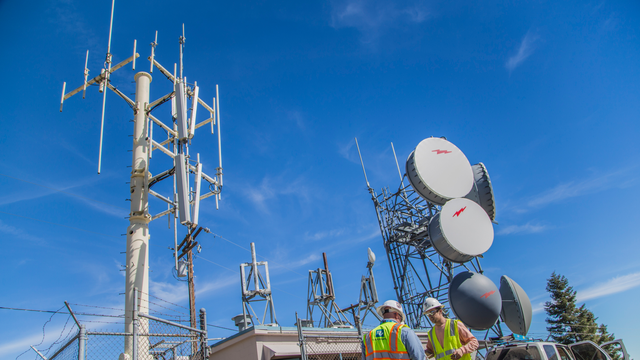Grid resiliency begins with communications resiliency. From storm hardening and rapid response to cybersecurity and streamlined operations, grid modernization depends on advanced communications at every level. For decades, the power grid has operated as a network of interconnected technologies. Yet without reliable communications infrastructure, this connected grid is left powerless. As the number of connected devices grows, only LTE and 5G wireless technologies offer the capacity and capability to feasibly support millions of simultaneous connections. Today, Private LTE and 5G networks are emerging as leading solutions to meet these demands.
In a world where reliable service is non-negotiable, Private LTE delivers the performance, security and scalability utilities need to build a smarter, stronger grid.
Southern Linc case study: real-world grid resilience with Private LTE
Traditional utility communications systems—often a patchwork of legacy and traditional narrowband radio, leased lines and public carrier networks—are no longer sufficient. During disasters, public networks may prioritize public service over utilities leading to long restoration times and leaving utilities without the real-time visibility, control and workforce coordination they need.
That’s where Private LTE and 5G networks come in. These dedicated, utility-owned networks provide secure, high-bandwidth, low-latency communications that are built to utility standards to increase resiliency and improve restoration.
Southern Company, through its subsidiary Southern Linc, exemplifies the power of private LTE networks. When a major hurricane struck the southeastern U.S., the utility’s private LTE network rapidly restored services faster than local commercial carriers.
“Southern Linc’s rapid restoration after Hurricane Helene wasn’t a stroke of luck—it was the result of strategic investment in utility-grade infrastructure,” said Bentina Terry, president and CEO of Southern Linc. “We were able to build our private LTE network to mission-critical standards, complete with hardened sites and backup power. This kind of resilience makes a powerful business case for utilities to own and operate their communication networks to ensure faster response, quicker service restoration and safer communities.”
Why grid resilience starts with private LTE/5G
For grid leaders across generation, transmission, distribution, metering and smart grid - charged with building a resilient and intelligent grid - Private LTE and 5G networks are no longer a nice-to-have, they’re an essential link in disaster readiness, resiliency and recovery. A Private LTE and 5G network provides:
1. Real-time grid edge control
Enables real-time monitoring and control of grid-edge devices simultaneously - like smart meters, reclosers and distributed energy resources. Private LTE and 5G networks support instant outage detection, fault isolation and coordinated restoration to improve safety measures and SAIDI/CAIDI performance.
2. Mission-critical communications
Supports mission critical push to talk for field force safety and mutual aid coordination with guaranteed bandwidth and utility-grade reliability.
3. Wildfire mitigation
Supports IoT sensors to enhance situational awareness and speed up response times, such as falling conductor protection which quickly detects and locates a fault and disconnects power from downed power lines to reduce ignition risks.
4. Advanced Metering Infrastructure (AMI 2.0)
Provides metering devices with two-way, near real-time communication, improving the ability to manage demand and respond to outages efficiently.
5. Cybersecurity and Control
Provides control over network security and data routing to support compliance and protect your most critical systems. Private LTE and 5G deliver a full security protocol stack not available from leased or commercial carriers, reducing cyber risk and lowering cyber insurance costs.







